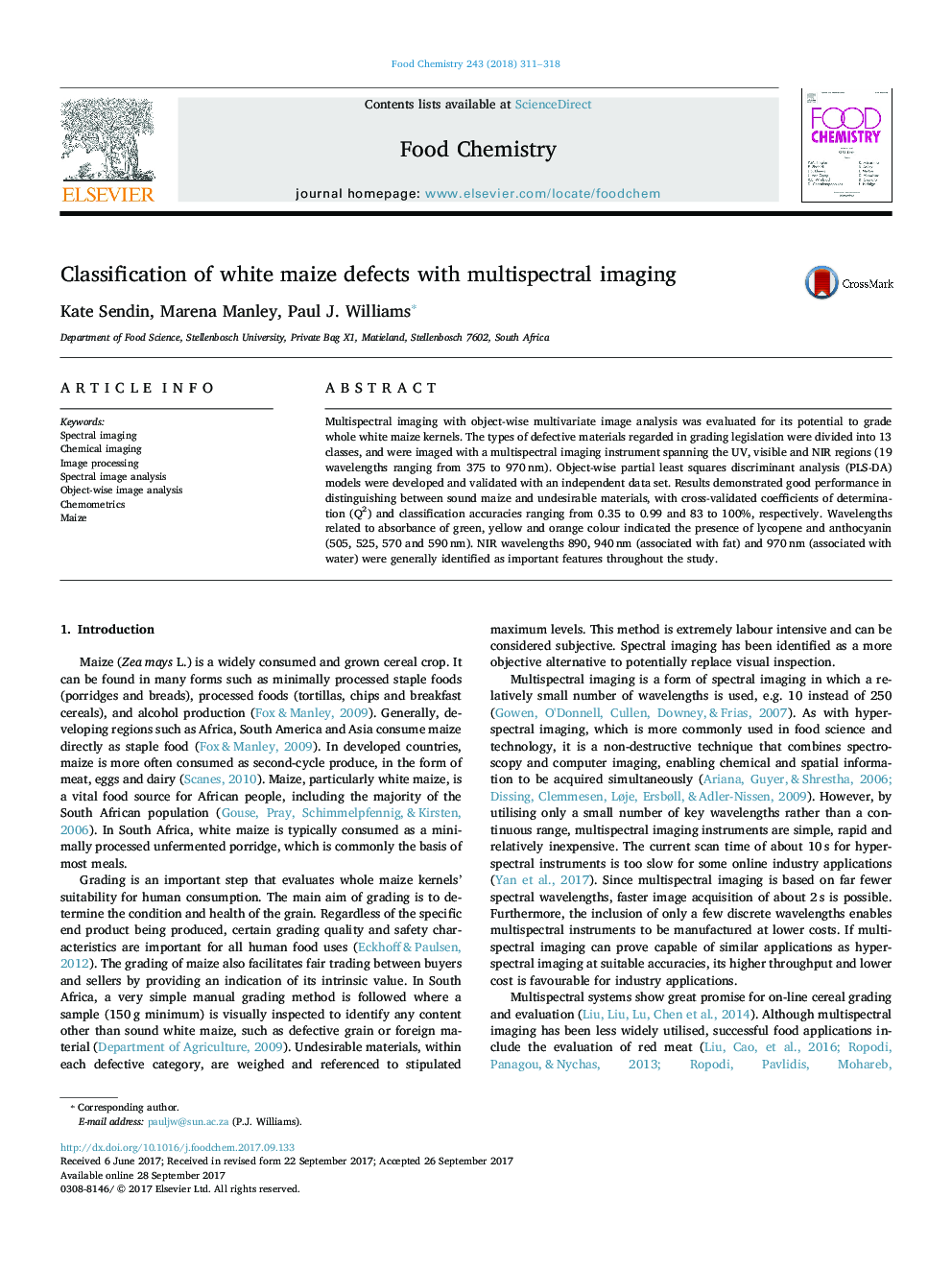| Article ID | Journal | Published Year | Pages | File Type |
|---|---|---|---|---|
| 5132559 | Food Chemistry | 2018 | 8 Pages |
â¢The potential for using multispectral imaging for maize grading was demonstrated.â¢Classification accuracies achieved using an independent dataset ranged from 83 to 100%â¢Eight of the 13 maize grading defect classes were perfectly classified.â¢Object-wise data analysis was demonstrated as effective for classification of closely related classes.
Multispectral imaging with object-wise multivariate image analysis was evaluated for its potential to grade whole white maize kernels. The types of defective materials regarded in grading legislation were divided into 13 classes, and were imaged with a multispectral imaging instrument spanning the UV, visible and NIR regions (19 wavelengths ranging from 375 to 970 nm). Object-wise partial least squares discriminant analysis (PLS-DA) models were developed and validated with an independent data set. Results demonstrated good performance in distinguishing between sound maize and undesirable materials, with cross-validated coefficients of determination (Q2) and classification accuracies ranging from 0.35 to 0.99 and 83 to 100%, respectively. Wavelengths related to absorbance of green, yellow and orange colour indicated the presence of lycopene and anthocyanin (505, 525, 570 and 590â¯nm). NIR wavelengths 890, 940â¯nm (associated with fat) and 970â¯nm (associated with water) were generally identified as important features throughout the study.
